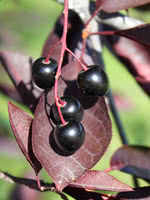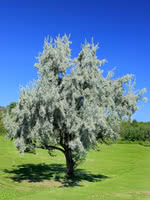Mon-Fri 9am - 5pm Mountain time
Schubert Chokecherry vs Russian Olive
Prunus virginiana Schubert
Elaeagnus angustifolia
NOT AVAILABLE THIS SEASON - MIGHT RETURN
Schubert Chokecherry is similar to a western chokecherry but features beautiful purple-red leaves throughout the summer.
This small, flowering tree is perfectly suited as an ornamental for city yards.
The fruit from this tree is a staff favourite for jams, jellies, and wines.
Russian Olive is a medium-sized deciduous tree that has attractive silvery coloured foliage with small yellow flowers that emit a fragrant sweet smell.
It is drought and salt tolerant, and works well as a shelterbelt species. Russian Olive can also be used to combat erosion.
Note: although Russian Olive is planted as an attractive boulevard tree in many northern areas, in warmer areas it can invade watersheds and is considered invasive. Please do some research and plant the right tree in the right place.
Schubert Chokecherry Quick Facts
Russian Olive Quick Facts
Toxicity: Toxic to animals with segmented stomachs (horses, cattle, deer moose, etc.)
In row spacing: 1.8 - 2.4 m (6 - 8 ft)

